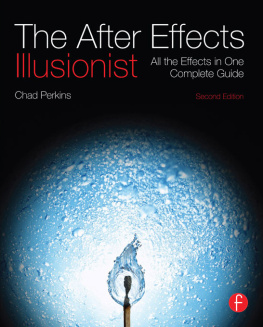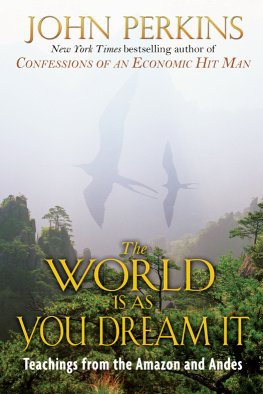PSYCHONAVIGATION
TECHNIQUES FOR TRAVEL BEYOND TIME
JOHN
PERKINS

Destiny Books
Rochester, Vermont
This book is dedicated to Ruth and Jason Perkins who were
the first to lead me into other cultures
Preface
Many changes have taken place on our planet since I wrote the original version of Psychonavigation nine years ago. The world economy has increased by six trillion dollarsmore than it had grown from the beginning of human history through 1950. The personal computer and cell phone have become integral parts of life on every continent. The Internet and e-mail have revolutionized the ways we communicate. The Earth also has spoken to us. Climate and weather have changed in many places around the world. El Nio has entered our vocabulary as a household word. We have grown aware that our irresponsible actions and consumptive lifestyles are driving us along a path of self-destruction.
Leaders and shamans from many cultures have joined the indigenous people described in this book to create Dream Change Coalition (DCC), a worldwide, grassroots movement dedicated to encouraging sustainable lifestyles and earth-honoring attitudes, preserving forests, and using indigenous wisdom to foster environmental and social balance. Having sold the environmentally friendly energy company I owned, I, too, now devote my time exclusively to DCC and its programs.
DCC has sponsored workshops in many countries and has taught psychonavigational techniques to hundreds of thousands of people. Through our shamanic travel programs we have taken several hundred people to live and study with indigenous psychonavigators deep in the Amazon and high in the Andes and Central American mountains, and we have brought Achuar, Shuar, Maya, and Quechua shamans to North America. To celebrate the new millenium we are organizing a trip to the shamans of the Himalayas and to ceremonies throughout the Americas and Europe.
Over the last decade, Psychonavigation has been printed in many languages. The publication of some of these editions, such as the one in Croatian, resulted from requests by local people who felt that the message and techniques described in the book would help their cultures survive. Its success encouraged me subsequently to write The World Is As You Dream It and Shapeshifting.
These three books have spawned dream-changing organizations around the world and shapeshifting programs in schools, medical centers, corporations, police departments, and in many other institutionsinstitutions that when this book was first published less than a decade ago would have considered the mere suggestion of these practices as utterly ridiculous.
The list of changes during these nine years seems almost endless. But one thing has not changed: the need to psychonavigate. The fact is that today psychonavigation is accepted and practiced by millions more people than it was back in 1990. The need to apply these techniques in our individual and communal lives continues. It seems greater than ever before.
Two years ago when my publisher first suggested that we reissue this book, I was less than enthusiastic. This past summer as we strolled together along a forest path near his home in the Green Mountains of Vermont, he raised the idea againthis time adding a simple question. Had I read Psychonavigation during the past nine years? When I confessed that I had not, he said, Please read it. Its a powerful book, a pioneer. Youll understand why I want to reissue it.
I promised him I would honor his wish.
Yet I procrastinated. Another book was taking root in me and I convinced myself that I did not want to be influenced by what I had come to call my old style. I felt certain my writing had improved over the decade and that each of the two books that followed Psychonavigation was superior to it. I also had been influenced, I am now certain, by the critical acclaim received by these later books. I told myself that I did not want to be discouraged or impaired by that old style.
Then I was asked to send a portfolio of articles about my work to a film producer. As I dug deep into the files I was astounded by the amount of positive press Psychonavigation had received. Not just in this country, but in many others.
One night I picked the book up and started reading. I continued on through the night, surprised by what I found. My publisher had been right: it is a pioneering book. And, yes, I was right, too, my style has changed. What struck me the most, however, was something I could not have known at the time I wrote it. Now I was able to see that Psychonavigation was not only the foundation for my later books, but also the inspiration for many of the others that currently line the New Age shelves in bookstores. While I had been told this by other authors, it was not until I re-read my book that I fully comprehended what they had meant. I was particularly struck by the power in the words and actions of the teachers who populate its pages. I understood that I could not take credit for this book, that the old style was not mine at allit was theirs. They are the true authors; I am their stenographer. I was deeply moved, and remain so, by those teachers and the simple integrity of their voices.
Unlike my most recent two books, Psychonavigation was written before I started taking others into the Amazon and Andes to live and work with the indigenous people there. It was written before I began giving workshops in North America and Europe, and before the creation of Dream Change Coalition. In short, it was written during a time when I was deeply involved in my own inner journey and in exploring the manner in which the shamans I had studied with during the previous two decades had impacted that journey. My relationship with those shamans and their cultures was profoundly personal and emotional.
The seeds for the two books that followed were planted in the same soil as Psychonavigation. When they sprouted, however, it was into a very different environment. Theirs is a much more communal context; their messages concern cultural transformation. They relate to the technological cultures that are home to the people in my workshops and on my trips and to the integration of these with the shamanic cultures.
In its own way Psychonavigation is more powerful than its successors due to the personal nature of its one-on-one teachings from people who in the later books would be identified as Master Shamans, and because of the intimacy of the voices of those teachers, along with their uncanny ability to predict the future. It is a book of propheciesones made during the past thirty years that have now become firmly established realities.
In chapter 4, Jose Jesus Quischpe takes us into a remote corner of the Andes to participate in a secret Birdman ceremony. We meet shamans who have never before allowed anyone outside their communities to learn their identities or to witness their ceremonies. At the time, in the late 1960s, it was an incredible moment for meboth terrifying and wonderful. How could I have known thenor even twenty years later when I was writing the bookthat during the 1990s I would guide dozens of North Americans to these same Birdmen? That they would open their homes and hearts to us? Or that they would influence so many people in my country, altering basic theories of medical science, physics, and economics? As I write this paragraph, three of those shamans are visiting the United States, giving DCC workshops and healing people who are unable to travel into the high Andes.
In chapter 5, Buli, the Buganese shipbuilder in Sulawesi, Indonesia says, My only chance of attaining perfection occurs when nature and all the spirits watching over her are on my side. Deeply moved by his words, I express to him my desire for the people of my country to understand this, and he adds, Perhaps it is your destiny to help them. You have to think positively. It was as if he anticipated the decade in my life that began after
Next page













